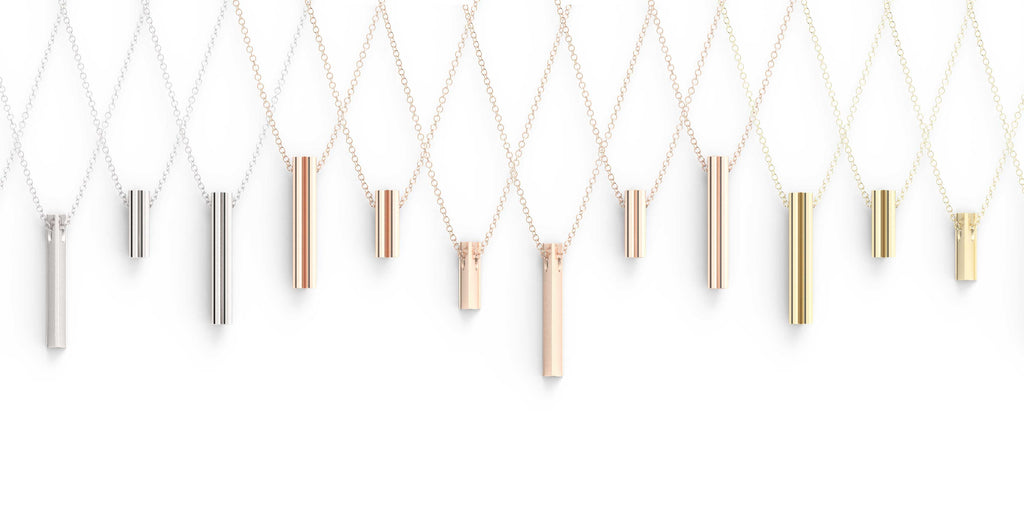Inspired By: Why Math Influences Me Creatively
A message from co-founder Beth Macri as told to Chrisanne Grisé
It might not seem obvious, but all good design is based in mathematics. Sure, plenty of art may look like it was conceived by artists who were simply following their creative instincts—but in reality, there are a lot more numbers involved than you might think. With our pendant necklaces and geometric jewelry, for example, math is the basis for everything, from the font we designed to the calculations of volume and proportion we rely on when 3D-printing a custom necklace. Those numbers help us keep the integrity and precision of our pieces intact, and they also allow us to create stunning, memorable jewelry. Math is way more significant in our world than it gets credit for—and that’s why I’m always trying to share how it has influenced my work over the years.

Early Inspiration
Growing up, I always loved art and mathematics equally. In fact, my heroes at age 13 were Frank Lloyd Wright and M.C. Escher. And my art designs were always very precise, angular, and mathematically inspired. I just couldn’t help myself.
I’m glad that I enjoyed and understood math from a young age, because it eventually opened me up to many wonderful opportunities. I was one of only a few women in my college math classes and engineering teams. But despite that, I didn’t find the subject intimidating. Instead, it was empowering, and in some ways I think I liked it and pursued it because it was a more male-dominated subject. I was never one to think that my gender would stop me from becoming a successful engineer.

Life as an Engineer
Once I became a structural engineer, I spent a lot of time assessing architectural plans, calculating the spans of I-beams (a standard component in construction projects; they went on to inspire our Diamond Pavé I-Beam Pendant) and the amount of rebar (reinforcing bars) within concrete. It was not glamorous work, but it was extremely satisfying to see huge architectural feats come to life.
Eventually, I decided I wanted to pursue design that was mathematically and structurally sound from the start, so I went back to school for parametric architecture, a process based on algorithms. As I studied, I began imagining some jewelry designs that would go on to become a few of my earlier collections.
Starting this company was a huge leap for me; I was used to methodical days as a small cog in a large machine. But once my company began, I became the ring leader of a small team of three. Every day is different now!

How Math Helps Us Create Beautiful Custom Jewelry
Look around you and you’ll discover math where you least expect it. That doesn’t mean you’ll see equations everywhere; rather, famous mathematical formulas—such as the Fibonacci sequence and the Golden Ratio—are reflected in everything from the symmetry of our faces to the patterns of flower petals to ground-breaking artworks like the Mona Lisa. My jewelry designs happen to be very obviously inspired by math, but even the most organic designs tend to have a mathematical foundation, something that’s balanced and makes the piece aesthetically pleasing. Math makes our world a more charming, delightful place—and that’s something to celebrate.
Explore our mathematically-inspired designs while building your own pendant necklace!
